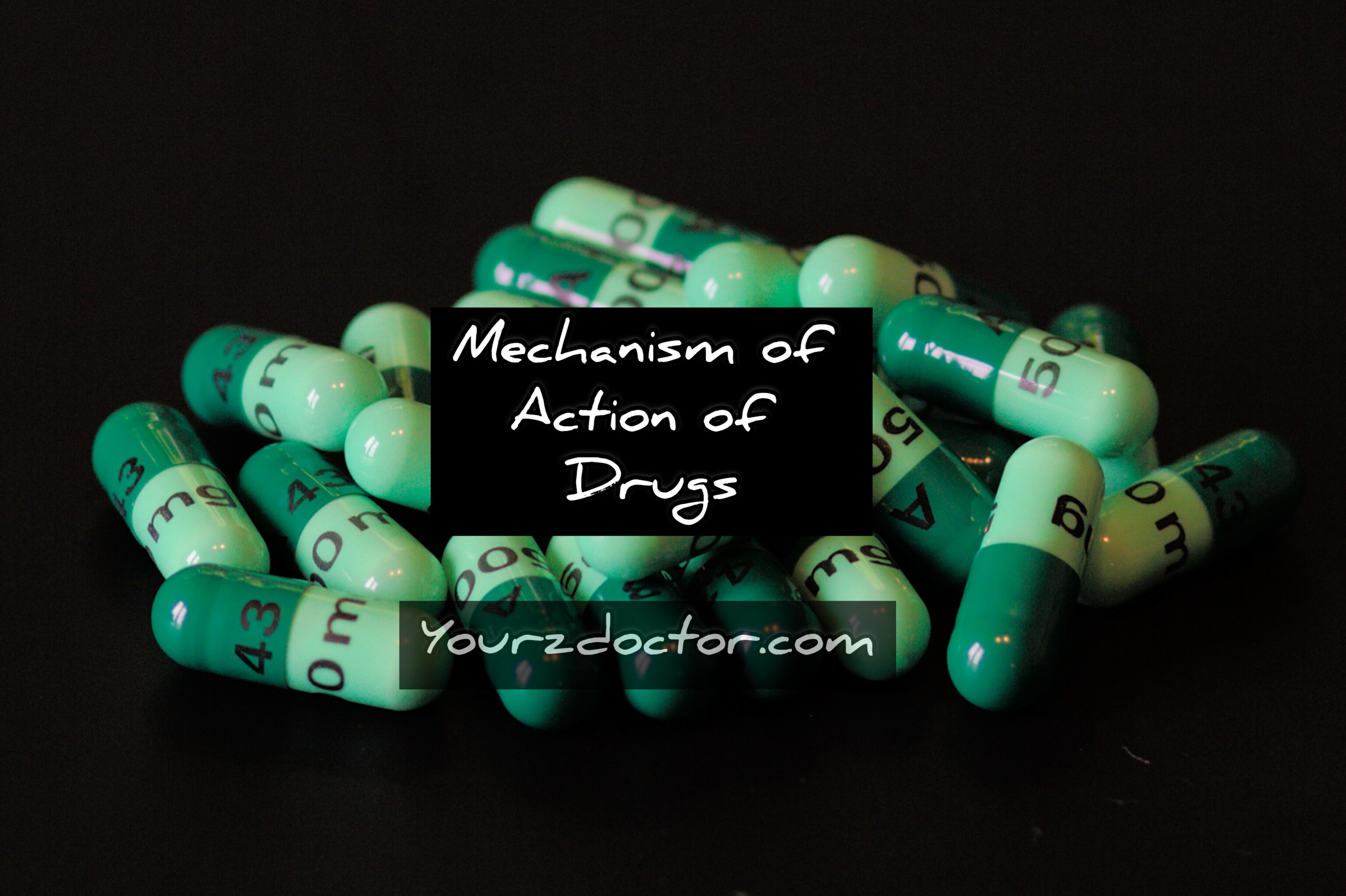Drugs act at the following sites;
Cell surface receptors
They act as the first line of
communication between the extracellular environment and the cell’s interior.
Cell surface receptors are important for many essential processes in the body,
such as cell signaling, cell adhesion, and the regulation of cell growth and
differentiation.
lon channels
Ion channels are specialized proteins
that form pores in the plasma membrane of cells, allowing the selective passage
of ions across the membrane. These channels play a critical role in maintaining
the electrical potential of cells, and are essential for many physiological
processes, including muscle contraction, neurotransmission, and the regulation
of hormone secretion.
Ion channels are selective for
specific ions, such as sodium, potassium, calcium, or chloride, and can be
gated in different ways. Some ion channels are voltage-gated, meaning they open
or close in response to changes in the electrical potential across the membrane.
Others are ligand-gated, meaning they open or close in response to the binding
of a specific ligand, such as a neurotransmitter or a hormone.
Carrier pumps
Carrier pumps are specialized proteins
that are embedded in the plasma membrane of cells, and they play a key role in
the active transport of molecules across the membrane. Unlike ion channels,
which allow the passive movement of ions across the membrane down their
concentration gradient, carrier pumps actively move ions or other molecules against
their concentration gradient, requiring energy in the form of ATP.
There are many types of carrier pumps,
each with different characteristics and functions. One well-known example is
the sodium-potassium pump, which is found in all animal cells and helps to
maintain the concentration gradients of sodium and potassium ions across the
cell membrane. The pump moves three sodium ions out of the cell for every two
potassium ions that it moves into the cell, using the energy of ATP hydrolysis
to do so.
e.g. some diuretics act on the Na+/CI-
cotransporter in the distal tubules, some diuretics act on the Na+/K+
antiporter in the collecting ducts, some antiulcer/reflux drugs work on the
H+/K+ antiporter.
Enzymes
Enzymes are specialized proteins that
catalyze, or speed up, biochemical reactions in living organisms. They play a
crucial role in many physiological processes, including digestion, metabolism,
and DNA replication.
NSAIDs inhibit cyclo-oxygenase which
blocks prostaglandin production, ACE inhibitors inhibit angiotensin converting
enzyme to decrease blood pressure, HMG-CoA reductase inhibitors inhibit this to
reduce lipid concentration.
Nuclear receptors/RNA/DNA
Nuclear receptors are a class of
proteins that function as transcription factors, regulating gene expression in
response to specific signaling molecules. They are found in the cell nucleus,
where they bind to DNA and affect the rate of transcription of target genes.
Intracellular structural proteins
Intracellular structural proteins are
a class of proteins that provide mechanical support and shape to cells and
cellular structures. They are found within cells and contribute to their
overall architecture and function.
One important group of intracellular
structural proteins are the cytoskeletal proteins. These include
microfilaments, intermediate filaments, and microtubules, which together form a
network of fibers that give cells their shape, help them move, and allow them
to divide. For example, microfilaments are involved in cell movement and
contraction, while microtubules are involved in cell division and transport of
organelles within the cell.
After binding to its receptors, the
drug produces its action by following mechanisms;
VIA INTRACELLULAR RECEPTORS:-
Lipid soluble drugs cross cell
membrane and act on intracellular receptors altering the functions of the cells
by initiating a series of biochemical & physiological changes that are
characteristic of the response to drug.
VIA CELL MEMBRANE RECEPTORS COUPLED TO ION CHANNELS:-
The drug binds to the receptor which
open or close an associated ion channel.
RECEPTORS LINKED COUPLING PROTEIN TO INTRACELLULAR EFFECTORS:-
The drug binds to a transmembrane
receptor causing activation of a G protein that results in stimulation or
inhibition of generation of 2nd messenger (CAMP, GMP,Ca" &
IP3).
G protein coupled receptors are
membrane bound receptors which are bound to effector system through G protein.
They have 3 subunits
- Alpha
- beta
- gamma.
Based on alpha subunit, they are
further classified into;
- Gs
- Gi
- Gq
Gs:-
Stimulates adenylyl cyclase which
cause conversion of ATP to CAMP, CAMP activates protein kinase which promote
phosphorylation Of proteins (tissue specific enzymes) activation.
Examples:-
- Sympathetic (beta)
- Dopamine (D1)
- Histamine (H2)
Gi:-
Inhibits adenylyl cyclase which cause
inhibition of cAMP.
Examples:-
- Sympathetic (alpha-2)
- Muscarinic (M2)
Gq:-
Activates Phospholipase C which
increase lP3- and which increases Ca++ release from sarcoplasmic reticulum
which cause activation of protein kinase C and results in phosphorylation of
proteins.
Examples:-
- Sympathetic (alpha-1)
- Muscarinic (M1, M3)
Via transmembrane receptor protein:
Some receptors have two parts one
present on the surface of the cell and other projecting inside the cell. Drug
binds to a site on extracellular domain, conformational change and activation
of the cytoplasmic enzyme domain, which may be a protein Tyrosine Kinase,
serine kinase or a Guanyl cyclase.
Example:-
- Insulin.
Learn more
Mechanism of action of Drugs
What is mechanism of action of Drugs?
What is cell surface receptors?
What is ion channels?
What is carrier pumps?
What is enzymes?
What is nuclear receptors?
What is intracellular structural
proteins?
How drug produce its action VIA
INTRACELLULAR RECEPTORS?
How drug produce its action VIA CELL
MEMBRANE RECEPTORS COUPLED TO ION CHANNELS?
Classification of alpha subunit
What is Gs?
Examples of Gs
What is Gi?
Examples of Gi
What is Gq?
Examples of Gq
How drug produce its action Via transmembrane receptor protein?






0 Comments